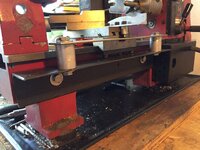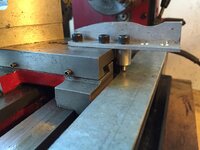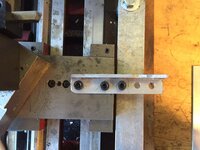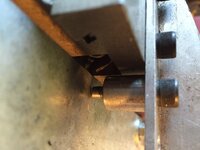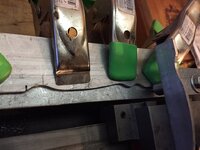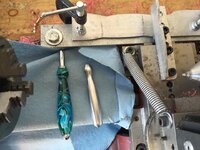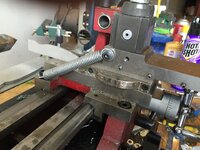I've been toying with the idea of making a taper attachment for my lathe and then thought that a pattern tracer would be more versital. Here is my version made with materials i could find in my shop and the local Ace Hardware. I have spent about 7 hours figuring and fabricating and drilling the cast iron frame. If there is interest I will do a write up after testing it this weekend. To make it trace the pattern you remove the threaded block from the cross slide and push the crossmslide against the pattern. With the compound set parallel to the cross slide, you set the depth of cut using the compound. It allows the use of the power feed or manual feed. I may rig a spring to hold the cross slide against the pattern. I plan to bump my bit to the bushing and move the pattern to the tracer and clamp that side. Then move to the other bushing and repeat. Back to the first and adjust. Works with about 2 checks on each end quick and easy to index. I am still working on the clamps i will use for the pattern. Likely small c clamps. Let me know what you think.
Attachments
Last edited:

